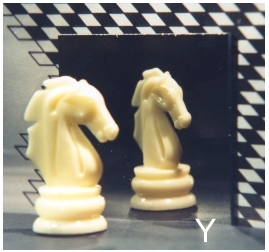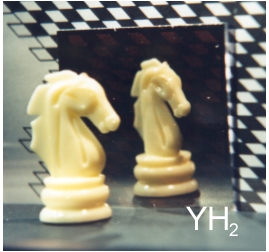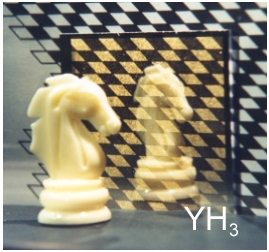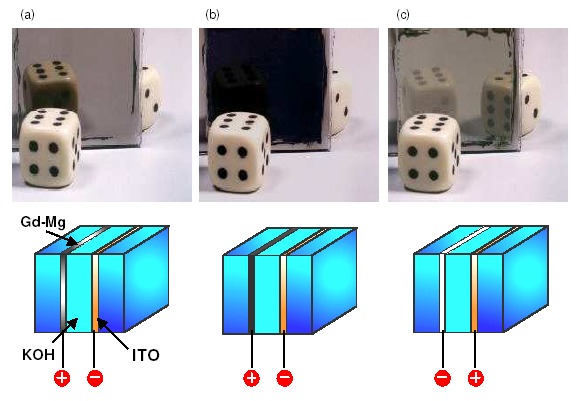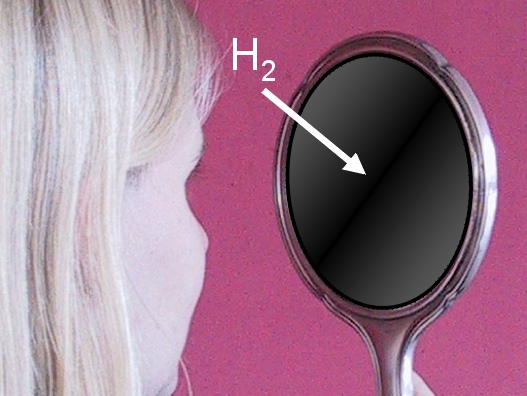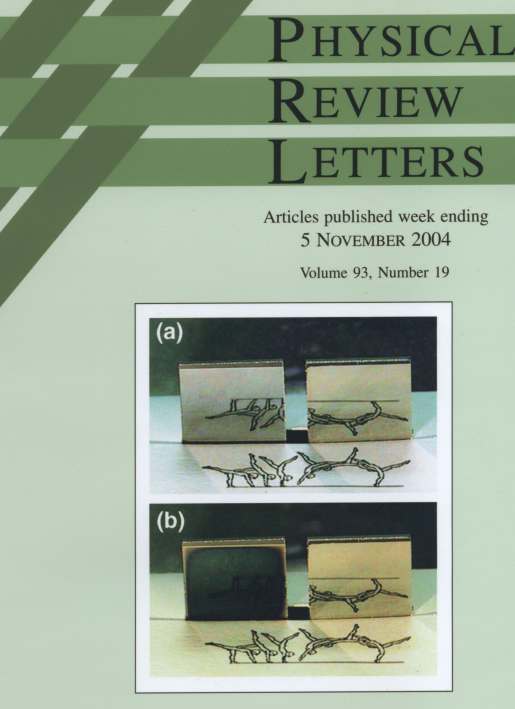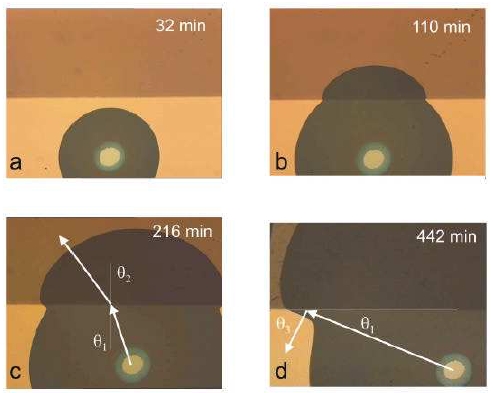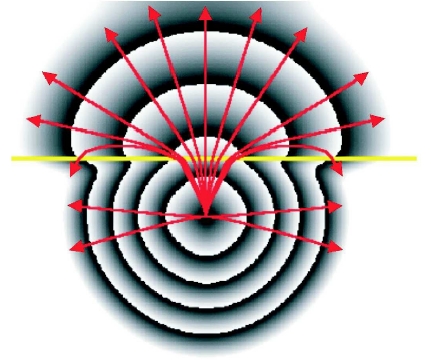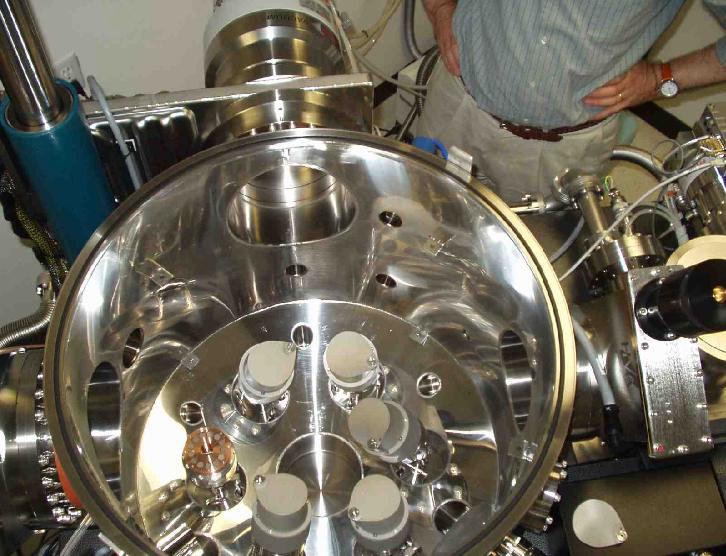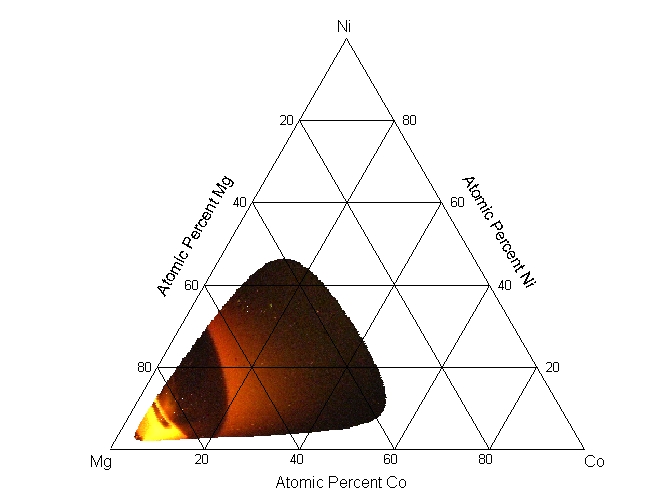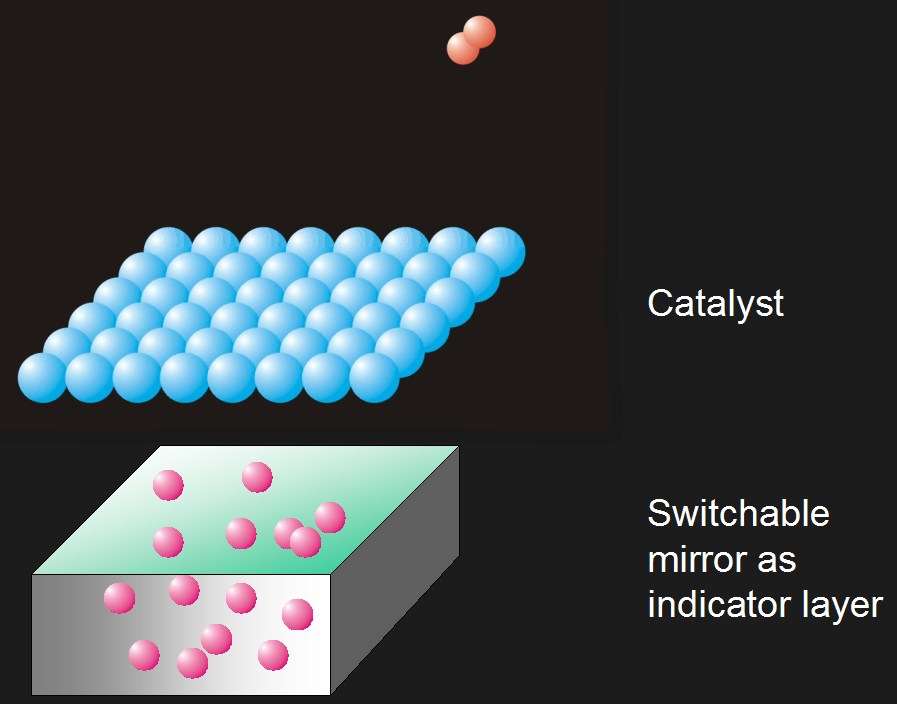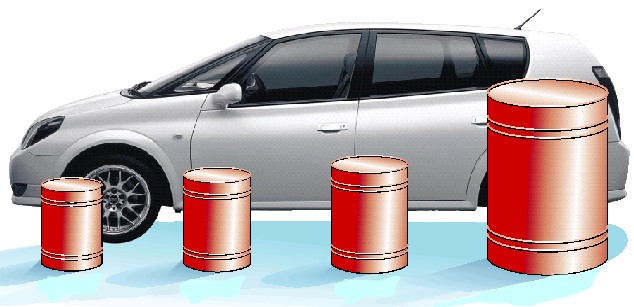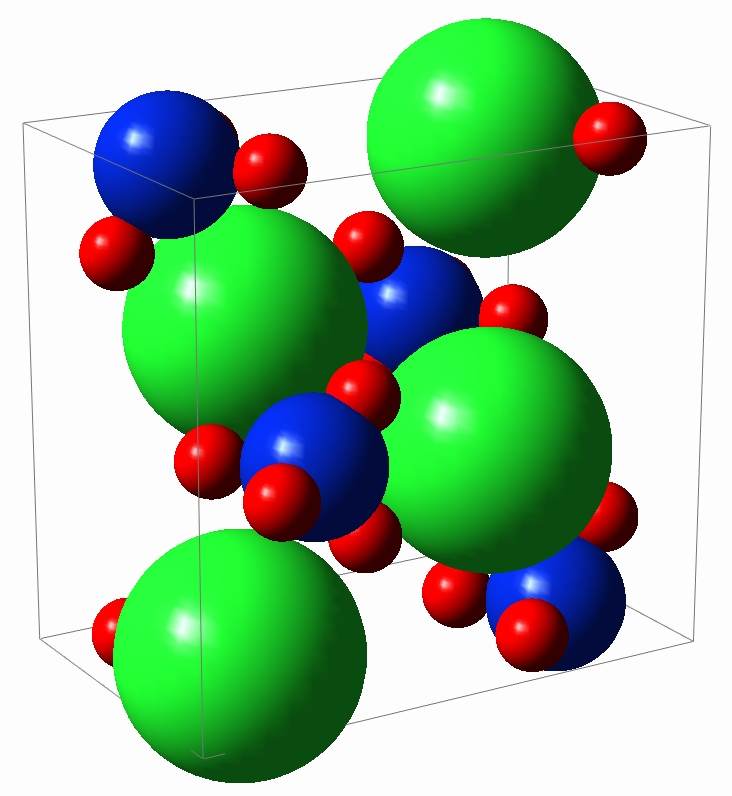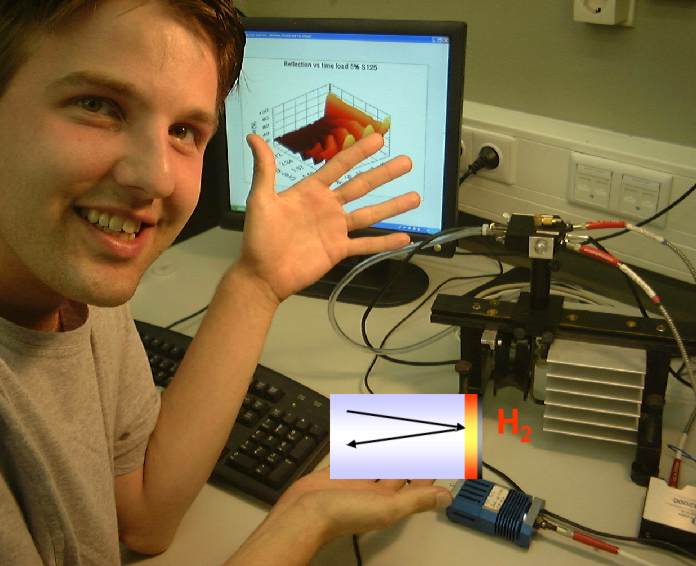|
Research on Switchable Mirrors in |
For a review paper on Switchable Mirrors click here |
|
|
|
|
J.N. Huiberts, R. Griessen, J.H. Rector, R.J. Wijngaarden, J.P. Dekker, D.G.
de Groot, N.J. Koeman,
Nature 380 (1996) 231-234 |
First generation switchable mirrorsOur group reported in 1996 spectacular changes in the optical properties of metal-hydride films of yttrium and lanthanum near their metal-insulator transition: the dihydrides are excellent metals and shiny while the trihydrides are semiconductors and transparent in the visible part of the optical spectrum. The transition from a shiny to a transparent state is reversible and simply induced at room temperature by changing the surrounding hydrogen gas pressure or electrolytic cell potential. Not only YHx and LaHx, but all the trivalent rare-earth hydrides and even some of their alloys exhibit switchable optical and electrical properties. In the transparent state they have characteristic colours: for example, YH3 is yellowish, LaH3 red, while some fully hydrogenated alloys containing magnesium are colourless.
|
|
|
Second generation switchable mirrorsFor technological
applications it is desirable to switch from a metallic state to a transparent
state that is colour-neutral instead of the coloured rare-earth trihydrides
(REH3). So far we have investigated switchable mirrors based on
Mg-Y, Mg-La, Mg-Sc and Mg-Gd. They all switch from a metallic shiny state to
an insulating transparent state. |
|
|
Third generation switchable mirrors
Upon exposure to hydrogen the optical properties of Mg2Ni thin films covered with Pd change from metallic reflecting in the unloaded sample to transparent in the fully loaded state. At intermediate hydrogen concentrations a 'black' state with low reflection and zero transmission appears over the entire visible spectrum. The origin of this peculiar black optical state is a self-organised double layering of metallic Mg2NiH0.3 and fully loaded Mg2NiH4 where the nucleation of the hydrogen rich phase surprisingly starts in the vicinity of the substrate-film interface. With increasing hydrogen content the Mg2NiH4 layer grows at the expense of the remaining metallic top layer. The unusual hydrogen loading sequence of Mg2NiHx is a general feature as Mg2CoHx and Mg2FeHx thin films are found to exhibit a similar behaviour.
W.
Lohstroh, R. J. Westerwaal, B. Noheda,
S. Enache, I. A. M. E. Giebels, B. Dam, and R. Griessen
|
|
|
Visualizations of hydrogen diffusionDiffusion waves form the basis of several measurement technologies in materials science as well as in biological systems. They are, however, so heavily damped that their observation is a real challenge to the experimentalist. We show that accurate information about the refraction- and reflection -like behavior of diffusion waves can be obtained by studying diffusion fronts. For this we use hydrogen in a metal (e.g. vanadium) as a model system and visualize its 2D migration with an optical indicator (yttrium) (see four photographs on the left ). The similarities and dissimilarities between classical optics and diffusion and in particular the applicability of Snell's law to diffusive systems are investigated. Our measurements are in excellent agreement with numerical simulations (top right). The red lines represent diffusion rays.
A. Remhof, R.J. Wijngaarden and R. Griessen, Refraction and reflection of
diffusion fronts |
|
|
Hydrogenography
(article in
Advanced Materials 2007) Hydrogenography is a novel technique
that exploits the optical changes induced by hydrogen absorption in metal
films. Hydrogenography on thin films with a compositional gradient has the
great advantage that it makes it possible to measure simultaneously a huge
number of samples of different elemental compositions on only one wafer (each
pixel of the recording camera corresponds essentially to one alloy
composition). This enormously facilitates the search for new (complex)
hydrides. The compositional gradient thin films necessary for hydrogenography
are synthesized by co-sputtering from three (or more) off-centered magnetron
sources (top picture). The (complex) hydride formation during ex-situ
hydrogen exposition at well-defined temperatures and hydrogen gas pressures
is monitored by the transparency of the films (bottom). Since all complex
hydrides found so fare have an electronic band gap their transparency is a
good indicator of the amount of absorbed hydrogen. Hydrogenography is thus
applicable to a large class of potential light-weight hydrogen storage
materials. After exposition to 100 mbar hydrogen
gas at room temperature a Mg-Ni-Co wafer exhibits large differences in
optical transmission. The yellow regions correspond to transparent
Mg-Ni-Co-H alloys with a high hydrogen content. The information contained in the
optical transmission photograph can be translated into a ternary composition
diagram as shown in the bottom picture.
This project is supported by NWO/ACTS/FOM
|
|
|
Hydrogenography for hydrogen catalystsThe catalytic activity of a layer for hydrogen dissociation and subsequent absorption can be monitored optically by using a switchable mirror material such as yttrium. The time dependence of the coloration of the indicator layer is a direct measure of the number of hydrogen atoms (or ions) that have entered the sample through the catalytic layer. This powerful technique has been used to investigate catalysts such as Pd, Pt, Ag, Cu, Rh,... on yttrium oxide and to demonstrate that Nb2O5 and not pure Nb is activating hydrogen absorption in Mg. This project is supported by NWO/ACTS/FOM A.
Borgschulte, W. Lohstroh, R. J. Westerwaal, H. Schreuders, J. H. Rector, B.
Dam, and R. Griessen A.
Borgschulte, R. J. Westerwaal, J. H.
Rector, B. Dam, R. Griessen, and J. Schoenes |
|
|
Hydrogenography for the search of light-weight hydrogen storage materialsWe are presently investigating complex transition metal-hydrides, alanates and boro-hydrides by means of hydrogenography. This project is supported by NWO/ACTS/FO |
|
|
Variable reflectance smart coatingsThe transition from shiny metallic to black (i.e. strongly absorbing) in 2nd and 3rd generation switchable mirrors (see above) can be used to develop variable reflectance coatings for rear view mirrors, combined solar (photovoltaic+thermal) collectors and optical hydrogen sensors. The photograph shows the same mirror
This project is supported by STW/ECN and FOM
J. Isidorsson, I.A.M.E. Giebels, R. Griessen and M. di Vece: Tunable reflectance Mg-Ni-H films, Appl. Phys. Lett. 80 (2002) 2305-2307 J.L.M. van Mechelen, B. Noheda, W. Lohstroh, R.J.
Westerwaal, J.H. Rector, B. Dam, and R. Griessen:
|
|
|
Fiber optic hydrogen sensorsThe transition from shiny metallic to black (i.e. strongly absorbing) in 2nd and 3rd generation switchable mirrors (see above) can also be used as sensing layer at the end of an optic fiber. The objective of this project is to develop sensitive, selective and fast coatings and the detection technique required for reliable, stable and cheap optical fibre hydrogen sensors. Fibre optics is selected as it is intrinsically explosion-safe (it does not involve electric circuitry at the sensing points) and it offers interesting possibilities for multi-head monitoring with a single detector unit. This is a great advantage in potentially explosive environments. This project is supported by NWO/ACTS/FOM |
|
|
|
|
|
|
|
|
|
|
|
|
